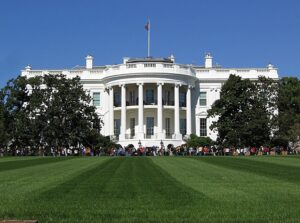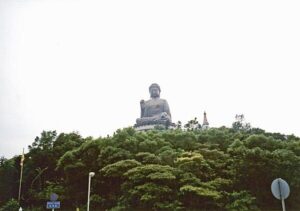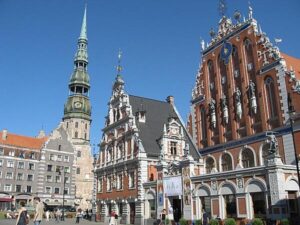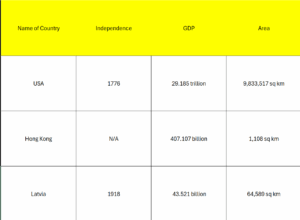
United States of America
Thirteen of Britain’s American colonies broke with the mother country in 1776 and were recognized as the new nation of the United States of America following the Treaty of Paris in 1783. During the 19th and 20th centuries, 37 new states were added as the nation expanded across the North American continent and acquired a number of overseas possessions. Two of the most traumatic experiences in the nation’s history were the Civil War (1861-65), in which a northern Union of states defeated a secessionist Confederacy of 11 southern slave states, and the Great Depression of the 1930s, an economic downturn during which about a quarter of the labor force lost its jobs. Buoyed by victories in World Wars I and II and the end of the Cold War in 1991, the US remains the world’s most powerful nation state. Since the end of World War II, the economy has achieved relatively steady growth, low unemployment, and rapid advances in technology.

Hong Kong
The UK seized Hong Kong in 1841, and China formally ceded it the following year at the end of the First Opium War. The Kowloon Peninsula was added in 1860 at the end of the Second Opium War, and the UK obtained a 99-year lease of the New Territories in 1898. Pursuant to a UK-China agreement in 1984, Hong Kong became the Hong Kong Special Administrative Region (HKSAR) of the People’s Republic of China as of 1 July 1997. In this agreement, China promised that, under its “one country, two systems” formula, China’s socialist economic and strict political system would not be imposed on Hong Kong and that Hong Kong would enjoy a “high degree of autonomy” in all matters except foreign and defense affairs for the next 50 years.

Latvia
Several eastern Baltic tribes merged in medieval times to form the ethnic core of the Latvian people (ca. 8th-12th centuries A.D.). The region subsequently came under the control of Germans, Poles, Swedes, and finally Russians. A Latvian republic emerged following World War I, but the USSR annexed it in 1940 — an action never recognized by the US and many other countries. Latvia reestablished its independence in 1991 after the breakup of the Soviet Union. Although the last Russian troops left in 1994, the status of the Russian minority (some 25% of the population) remains of concern to Moscow. Latvia joined both NATO and the EU in 2004; it joined the euro zone in 2014 and the OECD in 2016.

My story shows how countries that gained independence sooner than others are wealthier and often have more landmass. This connects to the industrial revolution in the 1800s. The countries that were able to capitalize on it first could restrict the economic freedom of countries under their power, Today we now see smaller countries that got a later start compared to “national superpowers” like the United States.